
There’s something different about Argentina’s Calchaqui Valley. It’s the most northerly of the wine regions in Argentina, and it’s the highest. The light is a little clearer – startling, even. And the air has a certain quality. It feels remote, and even a bit frontier-like here. Cafayate itself is a small town, with a large central square. It seems pretty easy-going, and a little ragged around the edges, but geared up to welcome tourists: there are lots of restaurants around the edge of the square.

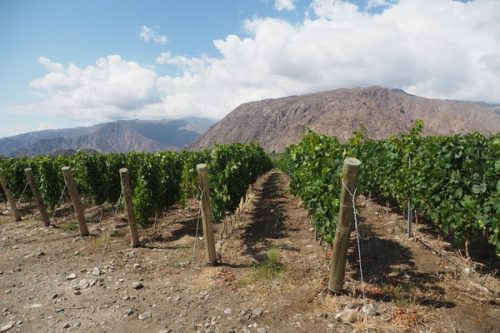
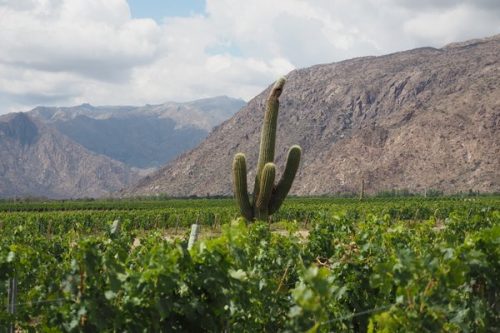
This is where I get to explore Argentina’s most northerly, and highest, wine region for the first time. It’s always fun to explore new wine regions, and I really enjoyed this visit.
The El Esteco winery is based in Cafayate. To get there, you fly into Salta and then it’s a two-and-a-half hour drive. From about a third of the way onwards it’s a lovely journey through some stunning scenery. The Calchaqui Valley is quite large and takes in three provinces. Most of it is in Salta, but there’s also a bit in Catamarca and a bit in Tucumán. Jesuit missionaries first planted vines here in the 1550s, and there are now some 3500 hectares of vineyard in the valley. It’s not big, but most of the production here is high quality.
Cafayate itself is a small town of around 10 000 people, located at 1700 m altitude. Annual rainfall here is very low, at around 200 mm, so any vineyards have to be irrigated. The valley Is, at its widest, 25 km from mountain range to mountain range, and the altitude rises to over 3000 m: this is where some of the highest vineyards on the planet can be found (until recently, the highest in the world was here – Ulquia at 3329 m – although there’s now a higher one in China). There are 23 vineyards in the valley at over 2300 m.

El Esteco began life as La Rosa winery in 1892. A decade ago it was purchased by Grupo Penaflor, who own Trapiche, and the name was changed to El Esteco, marking the change in direction in the wines. This is a sizeable winery, but the focus is on quality, and the wines at the top end have been moved lately in a very interesting direction, with less oak and increased use of concrete eggs, concrete tanks and large format oak.


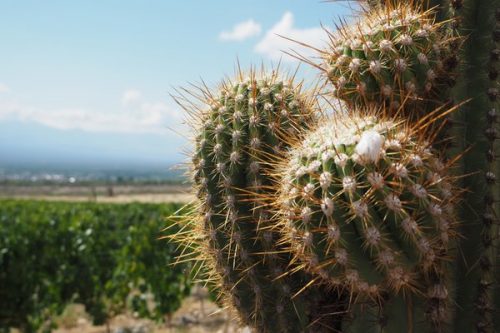
El Esteco have 570 hectares of vines in the Cayafate region, and another 280 hectares at Chañar Punco, which is at 2000 m. The Chañar Punco wines are made there, in a separate winery, but brought to the main El Esteco facility for blending and finishing. I met with chief winemaker Alejandro Pepa, as well as one of his winemaking team Emile Chaumont, and Claudio Maza, who is the winemaker at Chañar Punca.
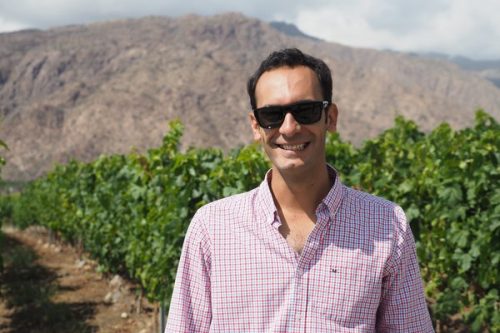
I had a look at three vineyards from El Esteco, together with agronomist Ramiro Rocha. The first was the new El Socorro vineyard, which was planted a few years ago after a lot of work clearing large rocks from the soil. The soil is actually the special feature in this part of the valley: it’s really rocky, and many of the rocks have been crusted in calcium carbonate. This is a common feature of arid soils like these – it’s known as pedogenic lime, and it can have an influence on the vines. Socorro is planted to red varieties and the wine from here, which will soon emerge, promises to be very special.
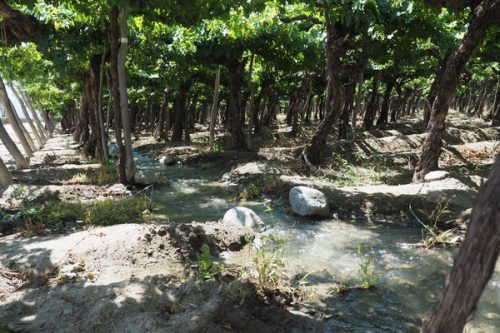



The second was the more traditional La Urquiza vineyard, where I got to see Block 9, which makes a single plot Cabernet Sauvignon. These venerable Cabernet Sauvignon vines are pretty old (almost 60 now), and the vineyard is arranged with a pergola system, and it’s flood irrigated. The trunks of the vines are tree-like, and these venerable vines have reached a nice point of balance.
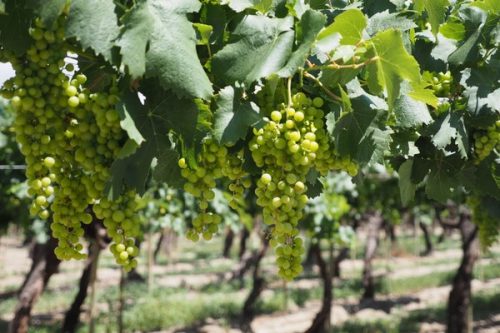

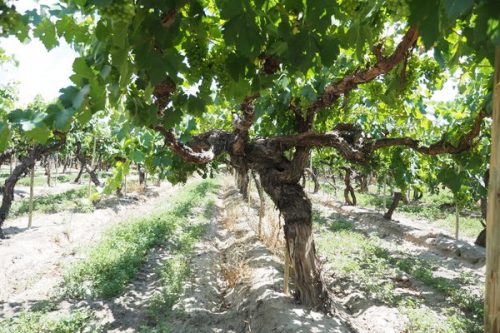
The third was another old pergola vineyard. Most of the vines here are Torrontes, the white grape that is the speciality of Salta. But there are also some Criollas interplanted. These are the old mission or pais grapes that were introduced by the Spanish when they first came here. One vine we found was Cereza, a specific variety of Criolla: the developing bunches looked very different. Soils here are much sandier, with old river silts and not many rocks.

In the winery it was good to see that Alejandro is working with a range of different methods of elevage. He has 10 new-ish 6000 litre foudres, a bevy of old foudres, and a rank of concrete eggs (made in Mendoza by Moreno). Then there are the old concrete tanks in a range of different sizes, as well as the regular options of barrels and stainless steel tanks.

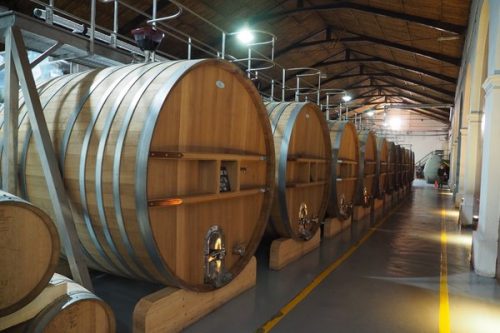




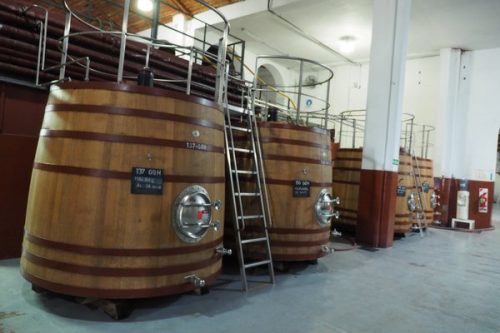
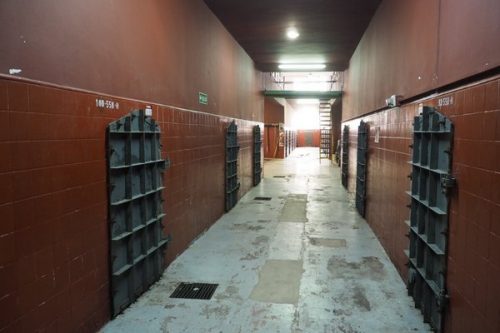
And the wines? Much better than I was expecting, with lots of nice surprises. The concrete-fermented Torrontes was superb, as were most of the old vine series. The Finca Notables series is pretty special, too.
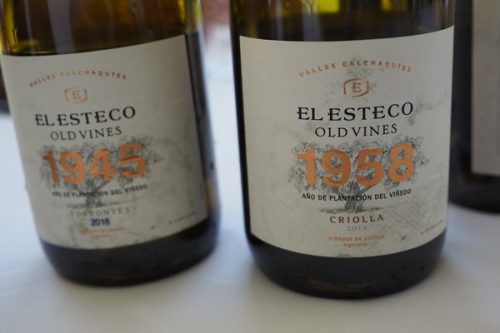
El Esteco Blanc de Blancs 2018 Valles Calchaquies, Argentina
This is a blend of five different grape varieties (Chardonnay, Marsanne, Roussanne, Torrontes and Viogner), and it’s the second vintage it has been made. The Roussanne and Marsanne are fermented in concrete eggs, and the Chardonnay in 6000 litre foudres. This has some pithy, citrussy terpenic character, but it mixes well with the pure, nicely grainy citrus and pear fruit. There are also some subtle pearch and pear characters. 92/100
El Esteco Blanc de Noir 2018 Valles Calchaquies, Argentina
This is Pinot Noir from Chañar Punco. Pale pink, it is subtle and delicate with nice precision to the red cherry and citrus fruit. A really fine, elegant wine. 92/100
El Esteco Torrontes Old Vines ‘1945’ 2018 Valles Calchaquies, Argentina
100% fermented in concrete eggs. Hand harvested from pergola vines, and 15% of the grapes were left whole cluster in the ferment. Wild ferment. The wine is tasted and when it starts to show some phenolic characters it’s taken out, the whole bunch component removed, settled, and put back into the egg. This is very floral with a fine citrussy nose and hints of table grapes. The palate is textured and mineral with good acid and some chalky notes. The terpenic characters of Torrontes are in the background. Lovely wine. 93/100
El Esteco Criolla Old Vines Criolla ‘1958’ 2018 Valles Calchaquies, Argentina
15% whole cluster. Criolla is the traditional grape of America, and this is Criolla chica with smaller berries and clusters. The vineyard was probably planted in the 1930s, but it is hard to find firm evidence. Pale red in colour but showing nice concentration of flavour, and notes of red cherries, plums and strawberries, with a green sappy edge. Has some hints of earth and dried herbs, but also nice sweet fruit. 93/100

El Esteco Old Vines Cabernet Sauvignon ‘1947’ 2018 Valles Calchaquies, Argentina
From Finca Las Mercedes, this is from 467 pergola trained vines, fermented and matured in concrete eggs with 15% whole bunch. Supple, smooth and rounded with nice grainy, slightly grippy tannins and notes of paprika and olive, as well as a touch of nice green. Concentrated with good structure under the sweet blackcurrant fruit. Very serious with some structure for ageing. 94/100
El Esteco Criolla Old Vines Malbec ‘1946’ 2018 Valles Calchaquies, Argentina
Concrete egg fermentation, wild yeasts, 15% whole bunch. Vivid with nice ripe, focused black cherry and plum fruit. Fine structure, with a sleek mouthfeel. Has ripeness but also finesse, and a lovely chalky edge. 94/100
El Esteco Chardonnay (experimental) 2018 Chañar Punco, Valles Calchaquies, Argentina
100% concrete egg. So tight, mineral and fine with lovely fine-grained structure and some slight saline hints. Very pure, taut and mineral with lemons, oyster shell and fine herbs, showing lovely purity. This has layers. It’s astonishingly good. 95/100
El Esteco Don David Reserve Malbec 2017 Valles Calchaquies, Argentina
Floral, expressive and very nice black cherry and blackberry fruit, hints of spice and a hint of cedar. There’s freshness and florality here. Very astute winemaking. 90/100
El Esteco Don David Malbec.Malbec Blend of Terroirs 2017 Valles Calchaquies, Argentina
This comes from Finca Maravilla (pergola, in Cafayate) and Chañar Punco (VSP). It has French oak staves in the tank for the first three months of ageing. Sweet, ripe and supple with sleek black cherry and blackberry fruit. It’s very smooth and polished, with some tarry, spicy notes. 88/100
El Esteco Malbec 2016 Valles Calchaquies, Argentina
70% matured in old French oak, with 30% of the blend unoaked in concrete tanks. Floral and supple with fine-grained tannins and aromatic black cherry and blackberry fruit. Stylish and balanced with lovely elegance allied to good ripeness. 91/100
El Esteco Cabernet Sauvignon 2016 Valles Calchaquies, Argentina
70% used barrels and 30% unoaked. Supple and rounded with lovely smooth fruit and some warm spicy notes. Hints of pepper, too, as well as green leafy characters. Real finesse, showing a bit of grip on the finish. 92/100
El Esteco Finca Notables Cabernet Franc ‘La Collection’ Vineyard 2016 Valles Calchaquies, Argentina
This is aged in 6000 litre foudres. 14.5% alcohol. Ripe, sweet and complex with a lovely fine-grained, mineral, chalky undercurrent to the blackcurrant and blackberry fruit. Supple and expressive, this is ripe but has nice grainy structure and some salty hints. 94/100
El Esteco Finca Notables Malbec 2015 Valles Calchaquies, Argentina
There’s some new oak showing here. Classy and fresh with a hint of mint, and stylish black cherry and blackberry fruit. This is very polished and needs a bit of time for the oak to integrate into the stylish fruit. 93/100
El Esteco Finca Notables Merlot 2015 Chaña Punco, Valles Calchaquies, Argentina
From Chañar Punco, 2000 m altitude. 16 year old vines, 15% whole cluster ferment with wild yeast then 15 months ageing in foudres. Such a distinctive wine, with a sweet herbal edge to the smooth red fruits, and notes of tomato and olive. It’s grippy and mineral, with lots of personality. 93/100
El Esteco Finca Notables Cabernet Sauvignon La Urquiza Vineyard Plot 9 2015 Valles Calchaquies, Argentina
Made from 55 year old pergola-trained vines, and fermented and matured in 6000 litre foudres, with 10-15% whole cluster and just a bit of pigeage. Very fine and supple with fine-grained blackcurrant fruit. Has good structure and silky elegance, showing a nice textural quality and well integrated green notes. Sweetly fruited but with good balance. 95/100
El Esteco Finca Notables Tannat Las Mercedes Block 28 2016 Valles Calchaquies, Argentina
This is Tannat on Pergola, which suits this variety. It’s fermented in large vats and then goes to big oak. This is concentrated and powerful with some dense structure, and it has some spice and cedar notes. Powerful with nice freshness, great density and firm structure. Lovely polish, too: it’s dense and punchy but really lovely, like a serious young Rioja in style. 94/100
El Esteco Altimus Gran Vino MMXV Valles Calchaquies, Argentina
14.5% alcohol. 50% Cabernet Sauvignon, 35% Malbec, 10% Cabernet Franc, 5% Merlot. Very concentrated and dense with vivid blackcurrant and blackberry fruit, with a touch of okak and lots of spiciness and dense structure. Mint, spice and a twist of earthiness, as well as a bit of evolution. Hints of olives and fine herbs, showing potential for development. 93/100
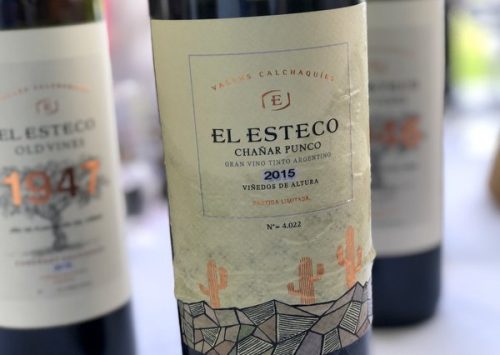
El Esteco Chañar Punco 2015 Valles Calchaquies, Argentina
60% Malbec, 30% Cabernet Sauvignon, 10% Merlot. Part stainless steel ferment, part concrete egg (whole cluster), aged 18 months in 6000 litre foudres. Very fine, fresh and supple with great concentration of primary black cherry and blackberry fruit, with some blackcurrant, too. Has nice grainy structure with real finesse and some salty hints. Such a wine, showing high altitude intensity and freshness. 96/100
Find these wines with wine-searcher.com
Leave a Comment on In Argentina (1) visiting the El Esteco winery in Cafayate